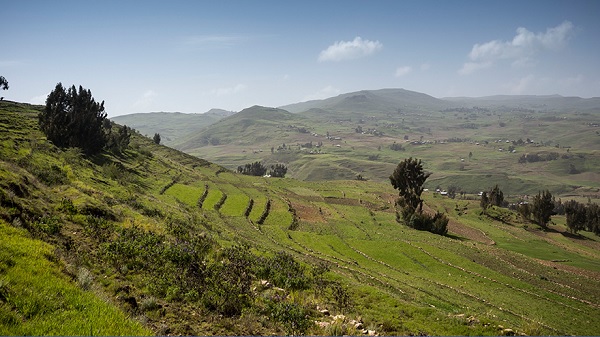
Fighting climate extremes using weather information: Automatic weather stations which supply weather data to help herders and farmers predict the availability of water and grass for grazing, and allows government agencies to predict and track extreme weather events so as to tackle climate extremes.
Can better weather information help Ethiopians better deal with unpredictable weather?
By Elias Gebreselassie (Thomson Reuters Foundation)
ARGOBA, Ethiopia–Armed with a spear and undeterred by the intense sunlight, Tarekegn Kareto meticulously plucks weeds in his maize field in Argoba village, in southern Ethiopia.
“With both dry weather and unusually heavy rains hitting us in the past year, I’ve lost over half of my harvest of maize and sorghum,” he said, pausing to wipe sweat off his forehead.
“That means I’ve had to dip into my crop reserves – which I can no longer sell for extra income – or even rely on neighbors’ charity for food,” he added.
Prolonged drought and erratic rainfall across the country have hit harvests and livestock, eating into farmers’ and herders’ income and meals, experts say.
In the second half of 2017, at least 8.5 million Ethiopians needed urgent food aid, up from 5.6 million in January, according to an August report by the U.N. Food and Agriculture Organization.
To remedy this, a project hopes to help Ethiopian herders and farmers access weather information to make more informed decisions and better absorb climate shocks.
It has set up 25 automatic weather stations across Ethiopia’s Afar, Somali, and Southern Nations, Nationalities and Peoples’ (SNNP) regions, which supply weather data to relevant government agencies and local communities.
The initiative, led by aid agencies Farm Africa and Mercy Corps, is part of the Building Resilience and Adaptation to Climate Extremes and Disasters (BRACED) program, funded by the UK Department for International Development.
The data helps herders and farmers predict the availability of water and grass for grazing, and allows government agencies to predict and track extreme weather events.
RELATED: Ethiopia Launches 15-Year National Adaptation Plan to Address Climate Change
“Although Ethiopia already has automated weather stations, populations in these remote regions have little to no access to climate information,” explained Dereje Agize, program coordinator at Mercy Corps.
Tsegaye Ketema, head of developmental meteorology at Ethiopia’s National Meteorological Agency, said that “with millions of Ethiopians in need of food aid due to very dry weather, access to reliable climate information can literally be a life saver”.
Setting up weather stations in rural areas is part of the government’s Climate Resilient Green Economy strategy, which aims to achieve self-sufficiency in food by 2025.
Continue reading this story at Thomson Reuters Foundation
——
See also:
- Ethiopia to Introduce “Climate Change” in Schools, Teacher Training Institutes
- Ethiopia: Manufacturing Industries vs. Climate Resilient Green Economy (CRGE)
- Ethiopia Launches 15-Year National Adaptation Plan to Address Climate Change
- The Unequal Burden of Rising Temperatures: How Can Low-Income Countries Cope?
- Ethiopia: AAU’s Center for Environmental Sciences and Canadian Embassy Stage Dialogues on Climate Change
